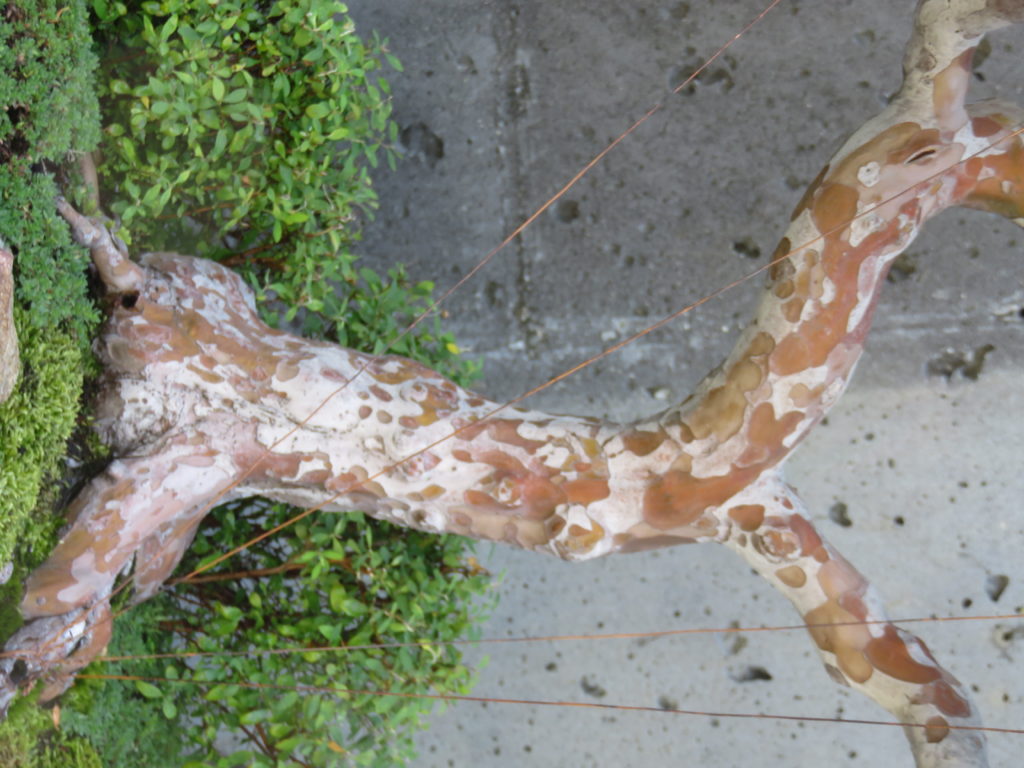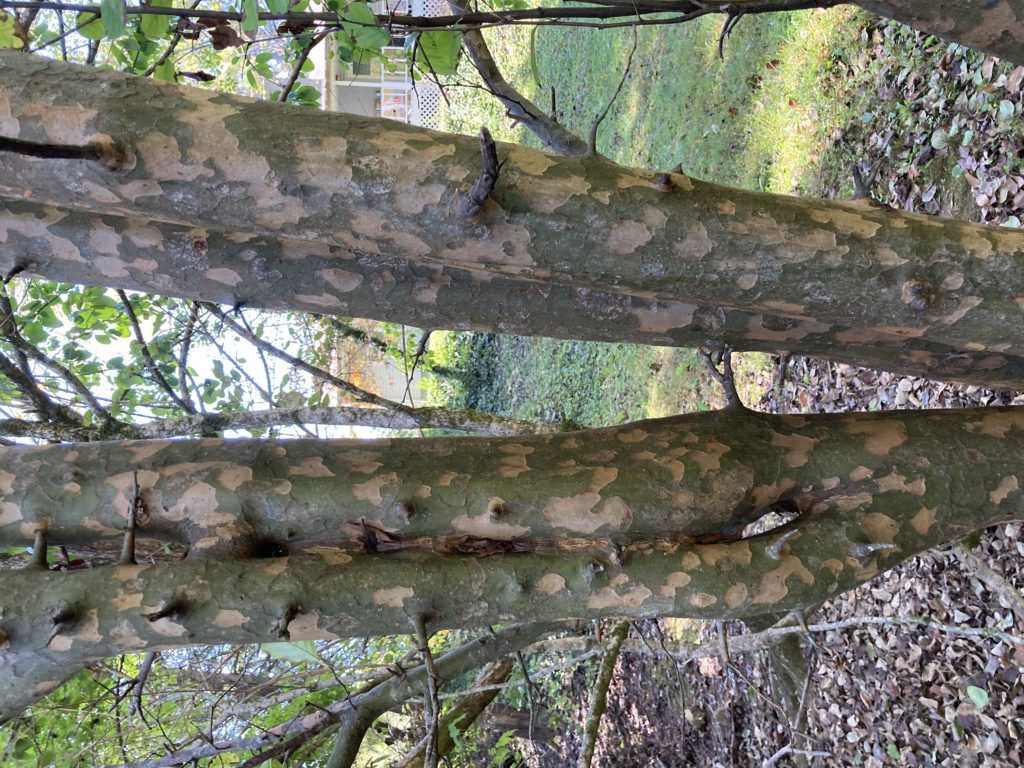Chinese quince (Pseudocydonia sinensis) is an under-utilized small 10-20 feet tall deciduous tree or large shrub with a dense oval crown (USDA hardiness zones 5-8). Initially, it starts out a slow grower for 1-2 years to establish its roots. Throughout the year, it provides several months of landscape charm that includes an attractive form, large edible fruits, and a stunning patchwork bark in fall and winter.

The finely edged, oval shaped, 3-4″ dark green leaves emerge in late March and April. The foliage stays blemish-free through summer and turns yellow to red in fall. Showy cup-shaped, fragrant pink flowers (to 1 1/2″ across) bloom in April-May. They resemble the blooms seen on the more popular Japanese flowering quince (Chaenomeles speciosa).
Huge (5 – 5½” wide) oval quince fruits ripen in fall (October) and are sweetly fragrant in aroma. Fruits are edible off the tree and can be made into jams and syrups. Unpicked fruits may become a trashy headache. Ripen fruits fall from the tree, break open, and rot. The decaying fruits emit a foul odor that attract wasps and other insects.
During the remaining autumn and winter season, your eyes will delight at the tree’s patchwork bark. The flakey, sycamore-like trunk exfoliates to expose brown, orange, green and gray hues.

Chinese quince is a good planting choice in small landscape places. It is easily grown in average well-drained soils and in full sun. The tree tolerates poor soils and moderate drought, but prefers fertile, moist, well-drained, mildly acidic loam soil. Site in winter protected locations (southern side of walls) in the northern part of its zone 5 growing range.
Chinese quince is available primarily from specialty nurseries online and generally not sold at local garden centers.
Fireblight can be a serious disease problem in areas of the U.S. in some years.

 Posted in
Posted in 
